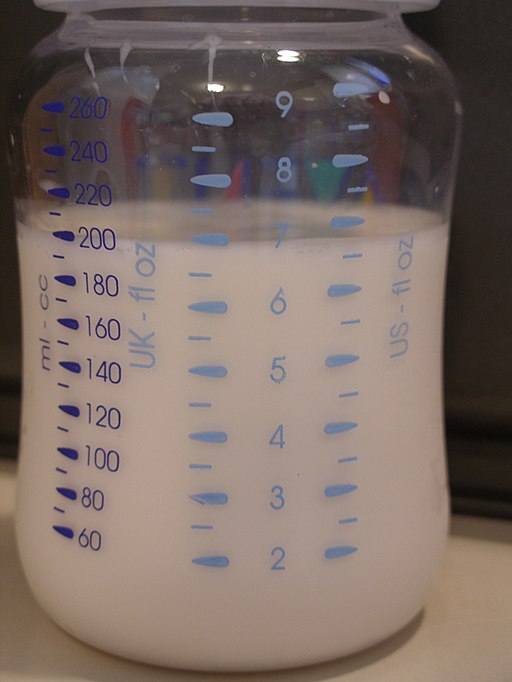Metric uses a base-10 system with units like meters and kilograms, while imperial relies on varied units like feet, pounds, and inches.
What is the metric system?

The metric system, also known as the International System of Units (SI), is a decimal-based measurement system used by the majority of countries around the world. It was first introduced in France during the late 18th century and has since become widely adopted due to its simplicity and practicality.
At the heart of the metric system lies a set of standardized units for measuring length, mass, volume, temperature, and more. The base unit for length is the meter, which is equivalent to approximately 3.28 feet. To make conversions easier, prefixes such as kilo-, centi-, and milli- are used to denote multiples or fractions of each unit.
Additionally, because most countries have adopted this system internationally, it facilitates communication and trade across borders by providing a universal standard that everyone can understand.
What is the imperial system?

The imperial system, also known as the British Imperial System, is a system of measurement historically used in the United Kingdom and its former colonies. It employs a collection of units for measuring length, weight, volume, and other quantities. Some common imperial units include feet, inches, pounds, ounces, gallons, and degrees Fahrenheit. The system often lacks a coherent base, with units derived from historical and sometimes arbitrary references.
For example, the foot was originally based on the length of a human foot, the inch on the width of a thumb, and the pound on the weight of a specific grain. This lack of uniformity can make conversions and calculations more challenging compared to the metric system.
Today, the imperial system is largely limited to a few countries like the United States, which primarily uses it for everyday measures, but it also officially recognizes the metric system.
The metric system, which is more logical and internationally standardized, has become the standard in most parts of the world, including scientific and industrial applications. The use of the imperial system has declined globally, particularly in fields requiring precision and consistency.
Metric System Vs. Imperial System – Key differences
| Aspect | Metric System | Imperial System |
|---|---|---|
| Origin | Developed during the French Revolution and is based on the decimal system. | Derived from historical British units and lacks a consistent base. |
| Length Units | Main unit is the meter; subdivisions are based on powers of 10 (e.g., millimeters, centimeters). | Length units include feet, inches, yards, and miles, with no uniform conversion. |
| Weight Units | Main unit is the gram; subdivisions are based on powers of 10 (e.g., milligrams, kilograms). | Weight units include pounds, ounces, and grains, with varied conversions. |
| Volume Units | Main unit is the liter; subdivisions are based on powers of 10 (e.g., milliliters). | Volume units include gallons, quarts, pints, and fluid ounces, with no uniformity. |
| Temperature Scale | Celsius scale based on the freezing and boiling points of water at standard atmospheric pressure. | Fahrenheit scale with origins in the use of mercury-in-glass thermometers. |
| Scientific Usage | Widely adopted in scientific and industrial applications for its precision and consistency. | Less commonly used in scientific and international contexts. |
| Global Adoption | Used as the standard system of measurement in most countries worldwide. | Mainly used in the United States, while other countries employ metric units. |
| Base Units | Utilizes a coherent base-10 system with easily convertible units. | Lacks a coherent base and features varied, non-cohesive units. |
| Ease of Conversion | Facilitates easy conversion due to the decimal nature of its units. | Requires complex conversions due to varied, non-decimal units. |
Advantages and Disadvantages of Metric System
Advantages of the Metric System:
- Ease of Conversion: The metric system is based on powers of 10, making conversions between units straightforward and efficient.
- Consistency: It provides a uniform and coherent system for measurements, simplifying calculations and reducing errors.
- Scientific Use: The metric system is widely used in scientific and industrial applications, promoting global standardization.
- Simplicity: The use of prefixes (e.g., milli, kilo) makes it easy to express quantities across a wide range of magnitudes.
- Global Adoption: It is the standard system of measurement in most countries, facilitating international trade and collaboration.
- Logical and Intuitive: Metric units are often more intuitive, as they are based on measurable and easily relatable quantities.
Disadvantages of the Metric System:
- Transition Challenges: In countries that traditionally use the imperial system, transitioning to the metric system can be costly and challenging.
- Resistance to Change: Resistance from individuals and industries accustomed to the imperial system can slow the adoption of the metric system.
- Historical Significance: In some regions, historical or cultural factors contribute to the continued use of imperial units.
- Complex Prefixes: Some metric prefixes, like yotta and zepto, may not have practical applications and can be confusing.
- Temperature Scale: The Celsius scale, part of the metric system, may be less familiar to those used to the Fahrenheit scale.
- Customary Use: In specific industries or contexts, imperial units may still be more convenient due to established practices.
Advantages and Disadvantages of Imperial System
Advantages of the Imperial System:
- Familiarity: In regions where it is used, the imperial system is familiar to the local population, which can make everyday measurements more intuitive.
- Historical Significance: The imperial system has a long history, and some argue that it carries cultural and historical importance.
- Ease of Customary Use: In specific industries or contexts, imperial units may still be more convenient due to established practices, especially in construction and some trade professions.
- Resistance to Change: Some people may resist transitioning to the metric system due to the familiarity of the imperial system.
Disadvantages of the Imperial System:
- Lack of Standardization: The imperial system lacks a consistent and coherent base for measurements, leading to complex and non-uniform conversions.
- Complex Conversions: Converting between imperial units can be cumbersome and error-prone due to the lack of a logical, decimal system.
- Scientific Limitations: The imperial system is less commonly used in scientific and international contexts, limiting its adoption and compatibility.
- Inefficiency: The use of varied, non-decimal units can make calculations and measurements more complex and less efficient.
- Global Adoption: Most countries have adopted the metric system as the standard, which can hinder international trade and cooperation for those using the imperial system.
- Limited Applicability: Imperial units may have limited practicality when dealing with metric-based industries or scientific research.
Image Credits
Featured Image By – Ninjamaster1099, CC BY-SA 4.0, via Wikimedia Commons
Image 1 By – Lubiesque, CC BY-SA 4.0 , via Wikimedia Commons
Image 2 By – MJCdetroit at the English Wikipedia, CC BY-SA 3.0, via Wikimedia Commons








